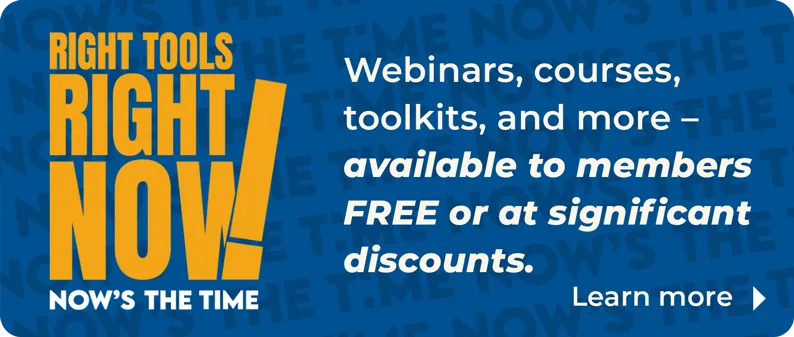In an ever-changing economy and real estate market, there is one common truth: Effective communication with members is key.
For some associations, big budgets may enable the purchase of “bells and whistles” and the latest gadgets, but having a tiny technology budget isn’t the hurdle it used to be.
If you think back ten or even just five years ago, hiring a techie to “program” your Web site was expensive, as was the per-address charge of blast e-mail providers. But today, some of the most effective tools in our technology arsenal are free (Facebook, Wordpress, Twitter) or low cost, leveling the playing field between small associations and large ones when it comes to member communications.
As Kathy Henderson, association executive of the Carbon County Association of REALTORS®, explains, “Just because we are small does not mean that our members don’t require the same services as those of larger associations. We just need to find more creative ways to accomplish it.”
Here RAE takes a look at essential communications technology tools, most of which cost under $15 a month—no creativity required.
E-mail newsletters
When I first started with my association in 2006, there was very little communication between the association office and members. Every member I talked to felt out of the loop and out of touch. This changed the minute we started sending out an e-newsletter.
I researched and found that Constant Contact was the right choice for us. This Web-based tool offers the ability to easily produce e-newsletters using templates. It also has event software built into the system, and offers a survey feature and the ability to see who is reading your e-mails. It has been an excellent tool for our organization and is cost effective, starting at $15 a month.
If you have fewer than 500 members, the following companies all offer e-newsletter and blast e-mail services for less than $15 a month: Benchmark Email, Pinpointe, GetResponse, Vertical Response, Mad Mimi, GraphicMail, Campaigner, Go Daddy, EmailBrain, and Boomerang.
Of course, you could send out your e-mail newsletters for absolutely free with a company called MailChimp. Although it is top-rated for ease of use, has great-looking templates, and is reliable, every e-mail will have a link to a funny YouTube video. Free always has a drawback.
Text messaging
Just a few years ago, associations got on board with text messaging members (on an opt-in basis) and spent typically around $40 to $60 a month for a service to send bulk text messages about events, news, or services. Today, we have Twitter and it’s free. Associations send thousands of tweets a month and broadcast links to services and surveys (see more on p.16). So who needs a text messaging service anymore?
It’s true that new smart-phone communications apps and info-on-demand technology, such as QR codes, have chipped away at the relevance of text messaging. Yet, once you open a communication channel to members, it’s unwise to close it. Many associations still offer text messaging as an option for members to receive news or updates. Some associations use texting for hotline services where members can have answers sent directly to their phone. As competition for smart-phone communication has grown, under-$10-a-month options for this category have also expanded. Cherple, one of the most popular mass texting services, is still free, and Club Texting offers a 2.5 cents per standard message fee.
Web space
Although most of us still pay to have our Web sites hosted and our URLs registered, these days, Web presence does not equal Web site. Luckily, Facebook, LinkedIn, and Wordpress are free and easy to set up. Small associations use these platforms to launch news or opinion blogs, government affairs or RPAC specialty sites, young member groups, MLS user groups, and more with little fuss or financing. Years ago, such endeavors would have required technical assistance and funding.
Indeed, communications technology on a small budget isn’t as limiting as it once was. Of course, the time and effort required to maximize potential shouldn’t be underestimated, but today the bounty of free and cheap online tools available to small associations promises to make you more efficient and effective.
REALTOR AE, Spring 2012








